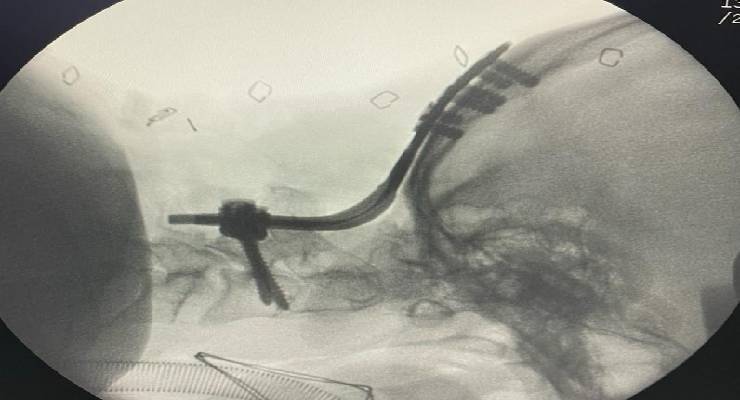
Cervical spine surgery refers to surgical procedures performed on the cervical spine, which is the portion of the spine located in the neck region. These surgeries are typically performed to address various conditions affecting the cervical spine, including degenerative disc disease, herniated discs, spinal stenosis, spinal fractures, tumors, and spinal deformities such as cervical kyphosis or scoliosis. Cervical spine surgery may be recommended when conservative treatments like medication, physical therapy, or injections fail to alleviate symptoms, and when the condition is causing significant pain, weakness, numbness, or neurological deficits.
Dr. Phani Kiran S, specialist in Cervical spine surgery at Medspine in Chennai, with more than 10 years of experience, is dedicated to providing comprehensive care and advanced surgical solutions for patients with cervical spine issues
In ACDF, the surgeon accesses the cervical spine through the front (anterior) of the neck. The damaged disc or bone spurs causing nerve compression are removed, and a bone graft or interbody cage is inserted to stabilize the spine and promote fusion between adjacent vertebrae.
This surgery involves accessing the cervical spine from the back (posterior) of the neck. The surgeon removes bone spurs, parts of the lamina (laminectomy), or other structures causing compression of the spinal cord or nerves. Fusion may also be performed to stabilize the spine.
Instead of fusion, cervical disc replacement involves removing the damaged disc and replacing it with an artificial disc implant. This aims to preserve motion at the treated level while alleviating symptoms caused by disc degeneration or herniation.
In a posterior foraminotomy, the surgeon accesses the cervical spine from the back to remove bone or tissue compressing the nerve roots as they exit the spinal canal through the neural foramen. This relieves pressure on the nerves and can alleviate symptoms such as arm pain or weakness.
These surgeries involve removing a portion of the lamina (the bony arch of the vertebra) to relieve pressure on the spinal cord or nerves, often due to spinal stenosis. Laminectomy involves removing the entire lamina, while laminoplasty involves creating more space by making a hinge on one side of the lamina.
Minimally invasive techniques may be applied to various cervical spine surgeries, including ACDF, posterior decompression, and fusion procedures. These techniques use smaller incisions, specialized instruments, and advanced imaging guidance to reduce tissue damage, blood loss, and recovery time.
It is a surgical intervention specifically for treating disc herniations in the lower back (lumbar region). Surgeons use an endoscope to remove portions of the herniated disc that are causing pain and other symptoms by exerting pressure on nerve roots.
It is similar in purpose to endoscopic lumbar discectomy, focuses on the treatment of herniated discs. However, it involves specialized microsurgical techniques and instruments in addition to the endoscope.
Endoscopic Cervical Discectomy targets disc herniations in the neck (cervical region). Surgeons remove the herniated parts of a cervical disc that are compressing the spinal cord or nerve roots.
The Ortho Clinic: Monday, Wednesday, Friday, Saturday.
Ojas Health: Tuesday, Thursday
© Copyright 2024 MedSpine. All Rights Reserved. Build with 🤍 by Digital GYB
WhatsApp us